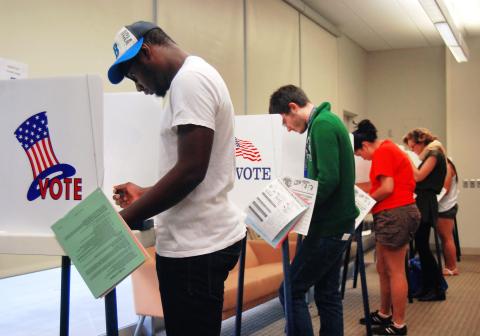In August, national attention focused on Alaska’s election for one primary reason, its new “top-four” nonpartisan primary with a ranked choice general election.
The system is a new one that has confounded pundits who are used to the traditional red v. blue view of the political world. But to many nonpartisan reformers, the system is the product of serious discussions over several years, and simply headed north to the future.
In fact, as early as 2018, the author of California’s nonpartisan “top-two” primary, Independent Voter Project, and the CEO of FairVote, an east-coast organization that has led a successful charge across the country for Ranked Choice Voting co-authored an op-ed in the San Diego Union Tribune suggesting a novel reform to improve elections: Move California to a top-four nonpartisan primary, instead of just two, and implement Ranked Choice Voting in the general election.
What’s more, is that the two organizations had often been at odds with each other. In fact, FairVote had opposed the top-two nonpartisan primary that Independent Voter Project helped pass in California.
But unlike the world of partisan politics, the two organizations didn’t try and resolve their differences with a mud bath.
Instead, they became two of the ten reform organizations to create a table where nonpartisan reformers who shared a goal of depolarizing politics could discuss their differences, share resources, and seek consensus among each other.
From there, election reform pioneers like Katherine Gehl and the Institute for Political Innovation partnered with leading reform organizations including Unite America, American Promise, Represent.us, the Action Now Initiative, and the Alaska League of Women Voters to do something special -- covert the election process of a state filled with nonpartisan people from a partisan based system to a system that better represents their spirit of nonpartisanship.
And they did it.
“We, the Independent Voter Project and FairVote, have and continue to have our different perspectives and opinions about what is the “best” way to conduct our elections,” wrote IVP Chair Dan Howle and FairVote CEO Rob Richie.
Both men share the same truth:”Our broken politics and changing electorate demand creativity, persistence and new reform coalitions”
In 2020, Alaska voters approved the “top-four” primary with ranked choice voting combo for their state. But two other states – Arkansas and North Dakota – nearly had their own ballot initiatives.
Now, Nevada has a “top-five” (aka Final Five) with ranked choice voting initiative on the 2022 ballot, while states like Missouri, Florida, and Wisconsin have budding efforts to do the same.
At the municipal level, California’s second largest City has started turning the wheels for an Alaska-style state-wide success.
In fact, the More Choice San Diego, a coalition that includes many of the organizations that helped blaze the trail up North -- has worked hand-in-hand with local organizations, activists, and political leaders for nearly four years to modify what started as an effort for “top-four” nonpartisan primaries with ranked choice voting to preparing for a “top-five” version of the system to be placed on the ballot in 2024.
The group was just one vote shy of getting its original initiative through the City Council in 2020 -- when the proposal was just a “crazy idea.”
Now, with the success of Alaska, and perhaps others, blowing wind to their backs -- San Diego could be poised for its own success.
But the biggest takeaway from all of this is something that will not likely get coverage from the national punditry.
The hoopla over Alaska’s election has nothing to do with Sarah Palin, Mary Perolta, or Nick Begich III.
The hoopla has nothing to do with Donald Trump, Joe Biden, Republicans, or Democrats.
When we look up north to the future, we should recognize the larger battle that is playing out: That in a country divided by hyper-partisan politics -- there are some nonpartisan answers out there that are gaining steam.
You just have to know where to look.
